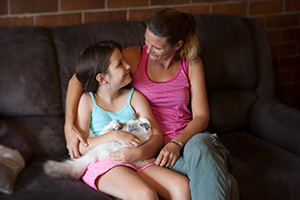Sara Mayer’s youngest child often asks: “Mum, how many days will we stay here?” Each time, she tells him they won’t have to move again, but so far she has been unable to keep her promise. In 2013, Mayer fled her abusive husband and went to the UK from mainland Europe with her two children, but he found them. The family moved and tried to settle somewhere new, but time and again he tracked them down.
In 2018, he locked himself in the house with his teenage daughter, who only escaped when Mayer arrived with the police. He then texted his daughter repeatedly saying he would kill her mother. Six months later, when Mayer turned up at school bloodied and accompanied by police, her daughter stopped speaking to her. For the fourth time in five years, they had to uproot their lives: moving town, changing school, and leaving their friends.
Like many in their situation, the family was in danger of ending up on the streets. Domestic violence is a major cause of homelessness. Government figures show that in the year to June 2019, almost 24,000 people were made homeless in England directly because of domestic abuse.
For those fleeing, it is increasingly difficult to find a space in a refuge, which offers temporary accommodation and intensive support. Councils cut funding for domestic violence refuges by almost a quarter between 2010 and 2017, and last year, Women’s Aid found that 64% of all referrals to refuges were declined. Its 2018 study showed 45% of people fleeing domestic abuse end up sofa surfing, and almost 12% sleep rough while waiting for a space to become free.



